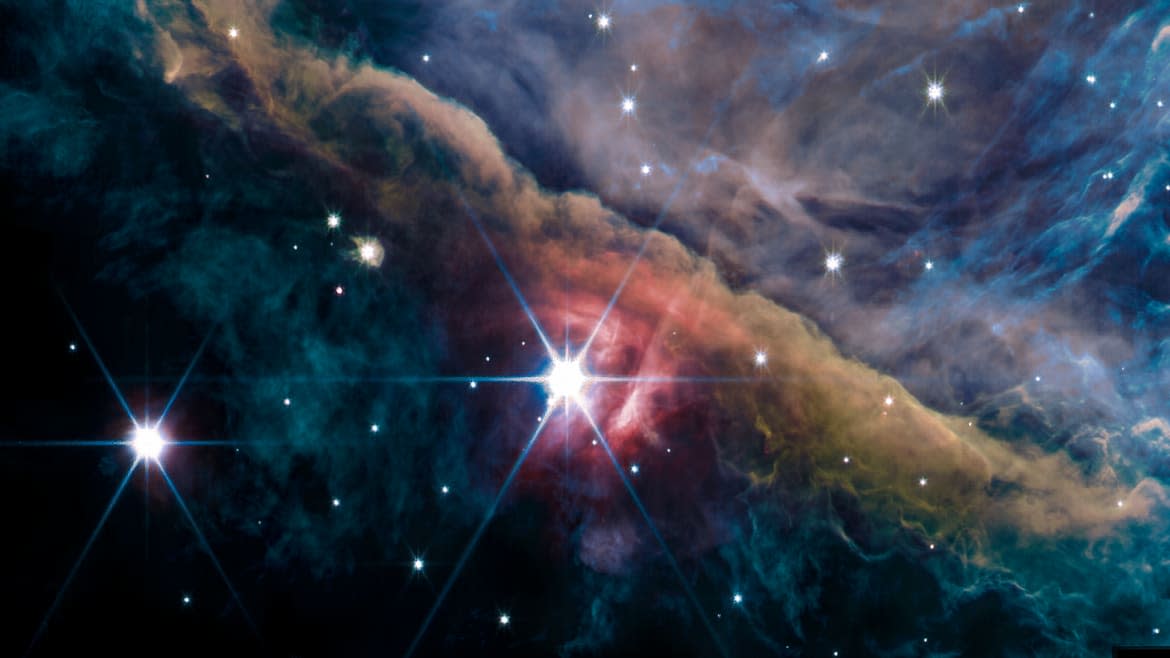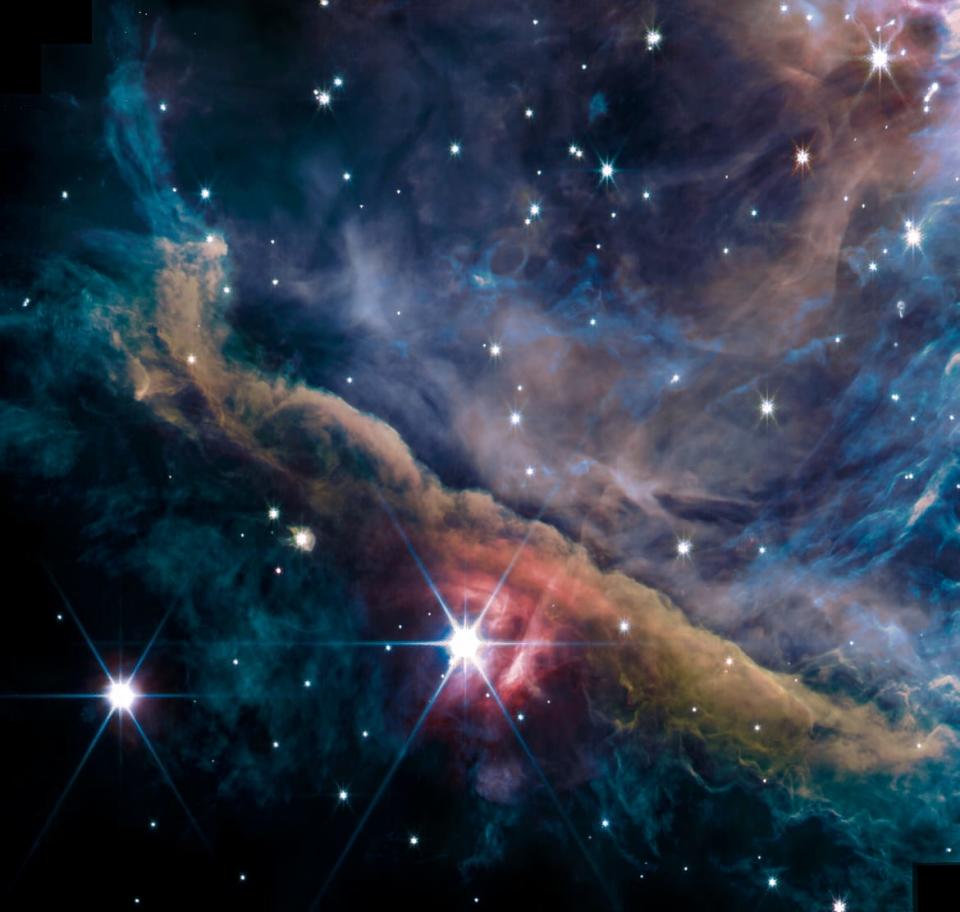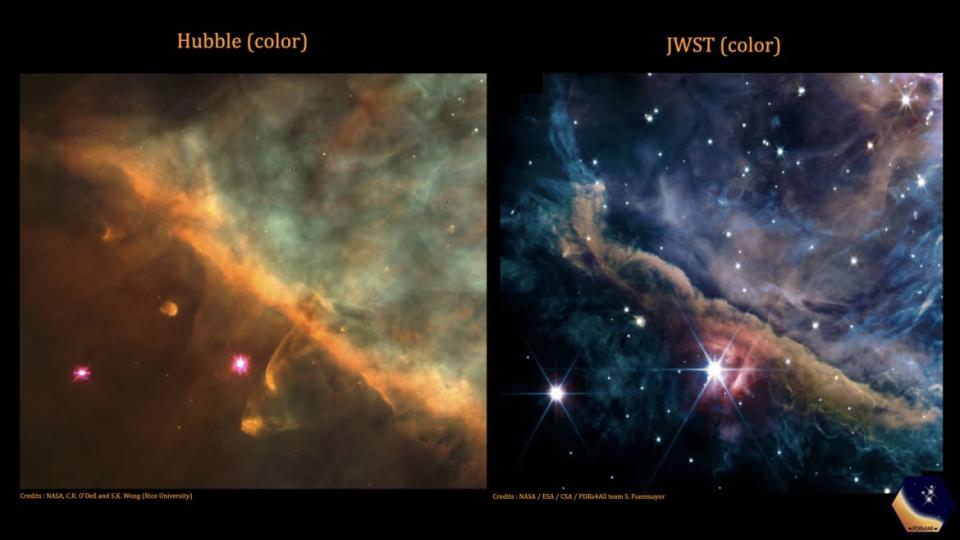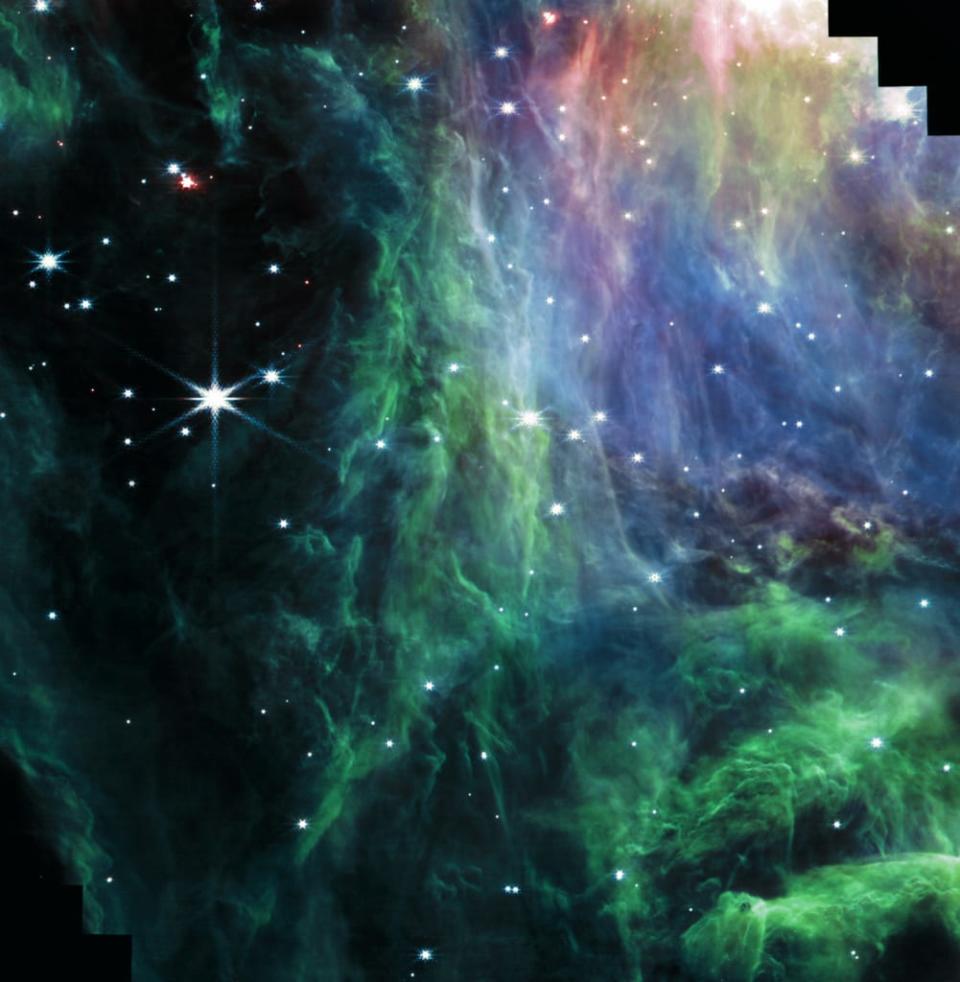This New Webb Telescope Image Looks Like a Painting of the Cosmos

NASA and its partners released a new image Monday morning of the inner region of the famous Orion Nebula, located 1,350 light-years away, taken by the James Webb Space Telescope. Though the celestial structure is by no means a stranger to astronomers, Webb’s powerful cameras show the nebula in unprecedented beauty and detail.
The new image is really a composite of several photos taken using different filters. Combined, we get a glimpse of the nebula’s various components, including its youngest stars and caverns of dense gas. The most visible feature is the Orion Bar, a wall of gas and dust that stretches from left to right and contains a bright star called θ2 Orionis A.

A composite of the Orion Nebula, viewed by the James Webb Space Telescope.
“We are blown away by the breathtaking images of the Orion Nebula. We started this project in 2017, so we have been waiting more than five years to get these data,” Western University astrophysicist Els Peeters, who helped lead the latest observations, said in a press release. “These new observations allow us to better understand how massive stars transform the gas and dust cloud in which they are born.”

Previous views of the Orion Nebula taken by Hubble, although beautiful, pale in comparison to what Webb can observe. Much of that is thanks to the orbital observatory’s ability to view the universe in infrared and near-infrared light, which allows it to see past the gas and dust that enshrouds much of the inner region’s most captivating parts. This also means scientists can better study how structures like the nebula foster the birth and growth of infant stars.

Close up of the Orion Bar’s northern region. Can you spot the frog?
Webb also picked up a bonus image of the nebula as it zoomed in on the Orion Bar. If you look closely, you can spot a frog-like structure.
Get the Daily Beast's biggest scoops and scandals delivered right to your inbox. Sign up now.
Stay informed and gain unlimited access to the Daily Beast's unmatched reporting. Subscribe now.

